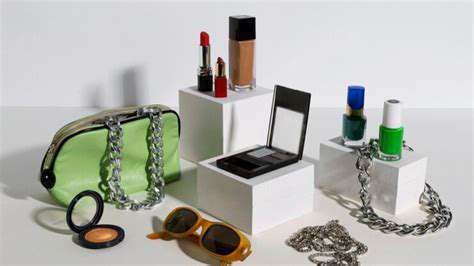How to mix modern and vintage wooden furniture in your home
Finding the Right Balance
Blending modern and vintage styles requires a delicate touch. The secret lies in strategic placement rather than quantity. Instead of flooding a contemporary space with antique items, select a few standout vintage pieces that serve as conversation starters. An heirloom mirror above a minimalist console or a weathered oak side table beside a sleek sectional can inject personality without disrupting the flow.
Modern elements breathe new life into traditional spaces too. A sculptural acrylic chair beside a Victorian escritoire creates fascinating tension. This interplay between eras keeps interiors dynamic, allowing your style to mature organically over time. The magic happens when pieces from different decades spark unexpected dialogues.
Incorporating Vintage Accents
True vintage finds carry patinas that mass-produced items simply can't replicate. When hunting for antique additions, prioritize pieces with visible craftsmanship - dovetail joints on drawers, hand-carved moldings, or timeworn leather surfaces. These textures add tactile richness to streamlined modern spaces.
Scale matters tremendously. While an ornate armoire might overwhelm a loft apartment, consider these smaller alternatives:
- Cluster of Depression-era glassware on floating shelves
- Art Deco brass bookends framing contemporary novels
- Patinated bronze door handles on modern cabinetry
Mixing vintage eras creates depth. A 1920s beveled mirror reflects light differently than 1970s smoked glass, offering layered visual interest. The unifying thread? Consistent material tones - keep wood stains in the same color family or metal finishes complementary.
Embrace the quirks - that hairline crack in the ceramic lamp base or the slightly uneven drawer glide. These imperfections whisper stories, transforming your space into a living archive rather than a showroom replica.
Creating Focal Points and Layering Textures
Understanding Focal Points in Interior Design
Every memorable room has an anchor point. When merging design eras, let one spectacular piece command attention. This could be:
- A Biedermeier secretary with intricate marquetry
- A cantilevered modern shelving unit
- An oversized abstract painting bridging both styles
Position your statement piece where sightlines naturally converge - opposite the entryway or centered along the longest wall. The surrounding pieces should play supporting roles, creating a visual hierarchy that feels intentional rather than cluttered.
Layering Textures for Depth and Dimension
Texture creates sensory richness. Contrast these combinations:
| Modern Element | Vintage Counterpart |
|---|---|
| Lacquered sideboard | Handwoven tribal textile |
| Polished concrete floors | Worn Persian rug |
The interplay of matte and glossy surfaces prevents monotony. A high-gloss modern dining table gains warmth from vintage linen napkins, while an aged leather club chair feels fresh against smooth plaster walls.
Matching Modern and Vintage Wood Tones
Wood compatibility follows these guidelines:
- Maintain consistent undertones (warm with warm, cool with cool)
- Vary intensity - pair pale ash with deep mahogany
- Use metal accents as transitional elements
A modern bleached oak desk gains sophistication when flanked by vintage walnut filing cabinets. The contrast highlights each piece's unique character while maintaining harmony.
Selecting Appropriate Lighting Fixtures
Lighting bridges eras beautifully. Consider these pairings:
- Industrial-style pendant over a farmhouse table
- Articulated modern task lamp on a Chippendale desk
- Vintage crystal chandelier in a minimalist foyer
Dimmable LEDs allow you to modulate ambiance - bright white for task areas, warm amber to highlight patinas. Directional spots can artfully emphasize a vintage piece's most interesting details.
Using Accessories to Enhance the Theme
Curate accessories that tell your design story:
- Modern ceramic vase holding dried vintage garden roses
- Mid-century ashtray repurposed as a jewelry catchall
- Antique microscope displayed beside contemporary art books
These thoughtful touches create moments of discovery throughout your space. Edit ruthlessly - each item should earn its place through beauty or function (ideally both).
Creating Visual Harmony and Flow
The final magic lies in circulation patterns. Arrange furniture to:
- Define clear pathways
- Create intimate conversation areas
- Allow visual breathing room around special pieces
Periodically view your space from different angles - what catches your eye first? Does the composition feel balanced? Adjust until the room feels effortlessly cohesive yet intriguingly layered.

- Top trends in modern wooden furniture for small spaces
- How to create a cozy bedroom with wooden furniture
- How to Measure Your Dining Area Effectively for Optimal Layout
- Best wooden storage cabinets for organizing your home
- How to combine wood furniture with bold interior colors
- Why cherry wood furniture is perfect for timeless elegance
- Top rated wooden furniture for home offices
- How to decorate your home with wooden furniture accents
- Why wooden furniture is the ultimate choice for a timeless home
- How to integrate wooden furniture into your home’s design seamlessly
- The best wood types for furniture that lasts
- How to pair wooden furniture with neutral colors for a calm vibe